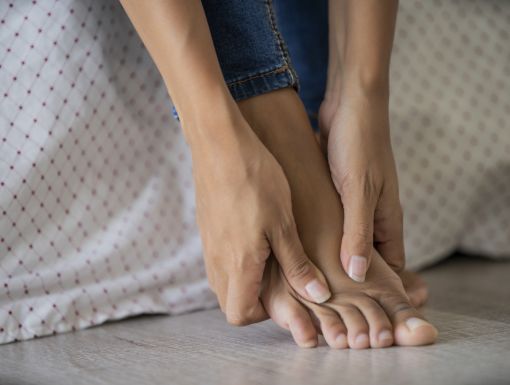
Why Do My Child’s Feet Turn In?
Picture this scenario. You are at your child’s well visit, and your pediatrician notices something you have already been wondering (and worrying) about: Your toddler’s feet turn inward. Your pediatrician may give you a diagnosis of metatarsus adductus, tibial torsion or increased femoral anteversion, and tell you everything will be fine. Or, you might get referred to a pediatric orthopedist. This can all sound a little intimidating and you’ll certainly have some questions!
What’s that? Metatarsus adductus, tibial torsion and increased femoral anteversion explained
Metatarsus adductus, also known as metatarsus varus, is a common foot deformity that causes the front half of the foot to turn inward. This condition is noticed at birth or in infancy. Metatarsus adductus may also be referred to as "flexible" (the foot can be straightened by hand) or "nonflexible" (the foot cannot be straightened by hand). It is one of the most common foot deformities and almost always corrects on its own.
Tibial torsion is literally a twisting of the lower leg bone. Almost all children have this to some degree at birth. It usually corrects over the first two years of life as the child grows.
Femoral anteversion, a twisting in at the top part of the thigh or hip bone, is normal in all children and adults. However, children tend to have increased femoral anteversion. Children with increased anteversion will look more like their entire knee points inward when they walk. This also gets better with growth. Children that are more “loose jointed” tend to be slower to correct.
Just to make things more complicated, it is very common for your child to have more than one of or all these issues at once.
How are these conditions treated?
For almost all children with metatarsus adductus, the condition will resolve on its own without treatment. If the deformity is rigid or does not correct by 6-9 months of age, depending on the severity of the deformity, treatment may include:
- Stretching or passive manipulation exercises
- Casts
- Straight last shoes and/or brace
- Surgery (rarely needed and usually not until children are 2-3 years old)
Tibial torsion is treated with observation. Since it is a deformity in the bone, casts, special shoes and stretching exercises really have no effect. It almost always corrects completely by 4-5 years of age. In the rare cases that it doesn’t, treatment involves surgery to cut the lower leg bones and turn them outward into a normal alignment.
Femoral anteversion is also a deformity in the bone, so a surgical treatment to turn the femur bone in the thigh outward can be necessary in rare cases. Fortunately, as with tibial torsion, almost all children remodel their anteversion to normal by 10-12 years of age. Surgery for this is rarely needed and should not be done until children are older as, time and growth will likely fix the problem.
The bottom line
Frequently, pediatricians are comfortable diagnosing and treating these issues. As pediatric orthopedists, we are always happy to examine your child if you or your pediatrician has any questions or doubts.
Are you seeking treatment for your child’s orthopedic needs? Schedule an appointment with an Ochsner pediatric orthopedist.



